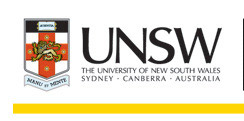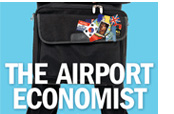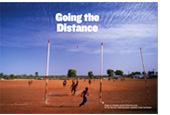Tim Harcourt*
There has been political controversy over the Free Trade Agreements (especially with China) and the mooted regional Trans Pacific Partnership (TPP). Dry economists on the right don’t like ‘trade distorting’ bilateral agreements (they don’t even like calling them ‘free trade’ agreements) whilst many on the left are concerned about trade agreements going too far, beyond reducing tariffs and quotas, and getting involved in social policy, labour standards and the provision of public goods.
But even beyond the political debate, there is the question of what Australian businesses want from public policy as they engage themselves in global markets. Fortunately the DHL Export Barometer that annually surveys 600 Australian exporters and has done since 2003 give us a pretty good handle on what exporters think.
For the most part, traditionally trade agreements played a small part in impediments to exporting. Most businesses worry about the exchange rate (when it was too high their goods and services become expensive when it’s too low their input costs soar as 80 per cent of exporters also import) or behind the border regulations and business culture differences. For the most part they didn’t think about FTAs and certainly not the GATT or the WTO (as the WTO seems to have been as dead as a Doha for some time now).
But in the DHL Export Barometer for 2015, there’s good news about free trade agreements, which will be music to the ears of Australia’s energetic Trade Minister Andrew Robb. In surveying existing and new agreements there is evidence that exporters like Australia’s FTAs and that they actually work in a practical business sense despite the media controversy. This would also come as a relief to the hard working trade officials in DFAT, who spend months and years on negotiations (they always say a good trade negotiator is a marathon runner not a sprinter).
According to the 2015 Barometer, the USA FTA (AUSFTA) is at last helpful after a decade of implementation along with NZ, Singapore and ASEAN. In the survey, AUSFTA is benefitting exporters, with increased sales and a larger proportion of exporters claiming that the agreement has had a positive impact on their business (59 per cent). This occurred despite the USA hitting the sub-prime crisis just 3 years after the deal was forged in 2005 (the US unemployment rate has now returned to pre-GFC levels notwithstanding the commentators who predicted that the AUSFTA would “kill a country” (I assume they meant Australia). The AUSFTA was followed by New Zealand (56 per cent from CER), Singapore on 42 per cent and AANZFTA – the agreement between Australia, New Zealand and ASEAN on 44 per cent.
And in important news for the Robb agenda, the new “trifecta” of FTAs – Japan, South Korea and China– has got the endorsement of the Australian exporter community. In fact, Japan is more beneficial than expected and all FTAs to North East Asia are enticing new exporters
Japan has actually been more positive than expected in 2014 and most FTAs were thought to increase exports to that destination, enhance an online presence, and develop new products and services for that destination as well as attracting new exporters.
In terms of future FTA destinations, exporters think that India, Indonesia, the Gulf Co-operation Council and Latin America should now be on Andrew Robb’s dance card. But of all the future pacts, India drew the most negative ratings consistent with the view about increased competition from India.
But what about the controversial TPP? According to Barometer, the TPP actually received a positive response with 46 per cent (up from 37 per cent in 2014) of exporters also thought they would benefit from the TPP, 51 per cent thought it would be neutral and 4 per cent expected it would be negative. But the TPP has some complications not always apparent in an up and down trade deal, including the investor provisions that have been controversial in other jurisdictions. As Princeton economist Dani Rodrik pointed out in his famous book Has Globalisation Gone too Far? at the high water mark of the anti –globalisation movement protests against the WTO in Seattle (the ‘Battle for Seattle’), when trade agreements stray onto the turf of the provision of public goods, or legislation like plain packaging for tobacco they are likely to lose public support.
Even in the China FTA the labour market provisions have overshadowed the benefits the overall agreement would bring. And it is important to remember Rodrik’s finding that economies that are open to trade have well developed important labour market institutions and social insurance. This is reflected in my own research Why Exports are good for workers on the Australian experience (that I started at the ACTU and continued at Austrade in conjunction with UNSW Australia) that showed that exporters, on average, paid 60 per cent higher wages than non-exporters, provided better levels of occupational health and safety, more education and training, equal opportunity provisions and were more likely to be unionised. The research demonstrated that free trade grew side by side with free trade unions and support for an open economy was bolstered by improvements in productivity, efficiency and fairness in the labour market. These are important lessons to heed as we strive to benefit from the next round of FTAs.
Tim Harcourt is the JW Nevile Fellow in Economics at UNSW Business School, UNSW Australia & author of The Airport Economist and Trading Places: www.theairporteconomist.com
Tim Harcourt is a professional economist specialising in international trade and labour economic issues in the Asia Pacific region and in the emerging economies. Tim's passion is Australia's engagement with the global economy and the challenges and opportunities it offers business and the Australian community as a whole.
Tim has broad experience in public policy and in communicating international economic issues widely in the community. He has held senior roles in both the public sector and private sector in Australia and internationally and in the community and education sectors. In Australia he has worked for the Reserve Bank of Australia, Fair Work Australia, the Australian Council of Trade Unions (ACTU and the Australian Trade Commission (Austrade).













No Comments so far ↓
Comments are closed.